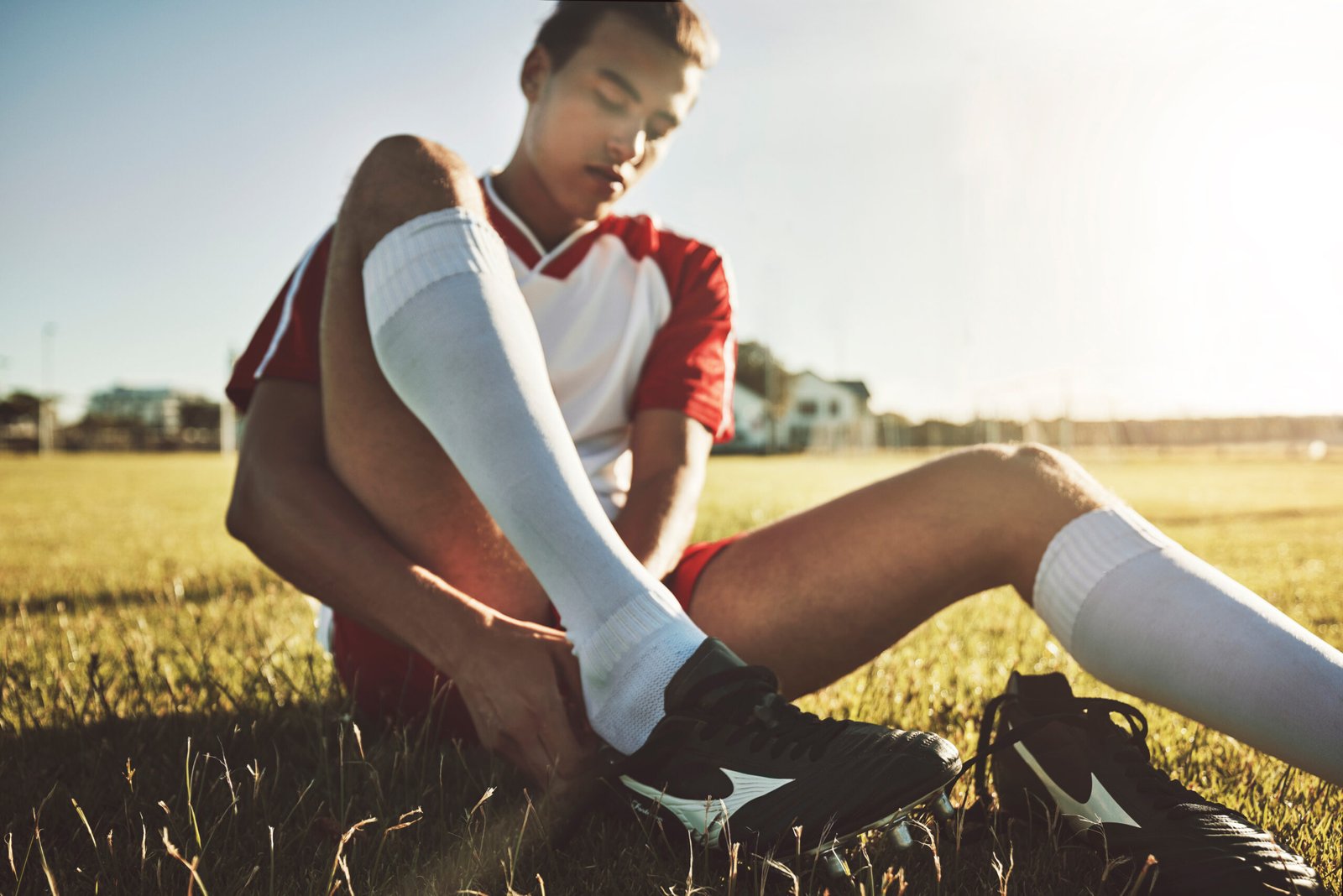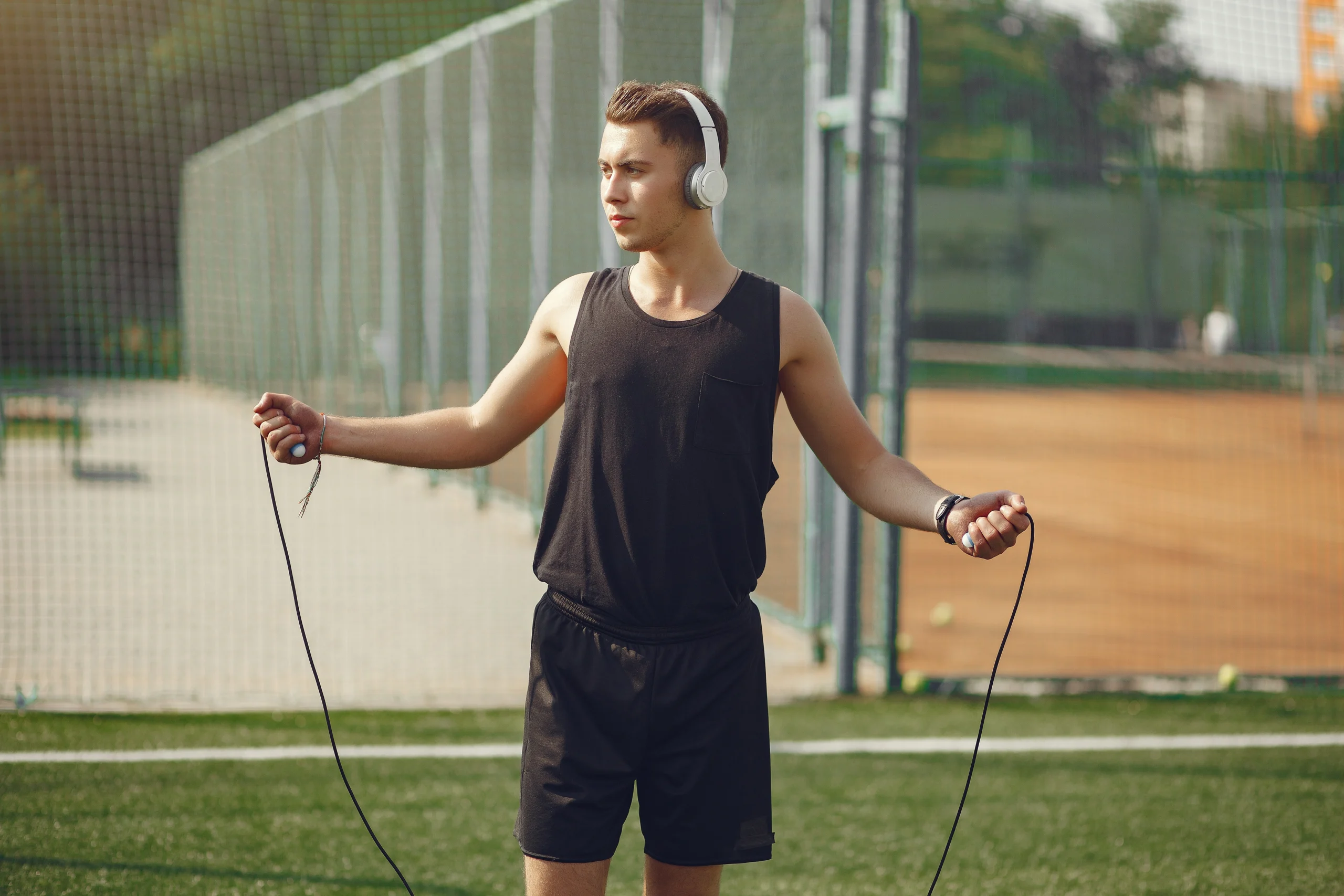Introduction
Importance of Injury Prevention
Preventing injuries is essential for athletes of all levels, from amateurs to professionals. Injuries can sideline athletes for extended periods and impact their performance, career longevity, and overall quality of life. Effective injury prevention ensures that athletes can maintain consistent training, compete at their best, and avoid setbacks that might hinder their progress.
Overview of Common Sports Injuries
Athletes are susceptible to various injuries depending on their sport and activity level. Common sports injuries include:
- Sprains: Often occur when ligaments are stretched or torn, typically affecting the ankles and wrists.
- Strains: Result from overstretched or torn muscles or tendons, commonly affecting the hamstrings and lower back.
- Fractures are breaks in the bone that can result from trauma or overuse and affect areas like the arms, legs, and wrists.
- Overuse Injuries: Develop from repetitive stress, leading to conditions such as tendinitis and stress fractures, often seen in endurance sports like running.
Understanding these injuries helps implement effective prevention strategies, allowing athletes to stay healthy and perform at their peak.
Understanding Common Sports Injuries
Types of Injuries
Sprains
Sprains occur when ligaments, the connective tissues that support joints, are stretched or torn. They commonly affect areas like the ankles, wrists, and knees. Symptoms typically include pain, swelling, bruising, and limited movement.
Strains
Strains are injuries to muscles or tendons caused by overstretching or tearing. Commonly affected areas include the hamstrings, lower back, and shoulders. Symptoms include muscle pain, stiffness, and limited range of motion.
Fractures
Fractures involve breaks in the bone, which can result from trauma or repetitive stress. They are common in contact sports and high-impact activities. Symptoms include severe pain, swelling, bruising, and an inability to move the affected limb.
Overuse Injuries
Overuse injuries result from repetitive stress on a particular area of the body, leading to conditions such as tendinitis and stress fractures. These injuries often occur in sports that involve repetitive motions, such as running or throwing. Symptoms include persistent pain and inflammation in the affected area.
Causes of Injuries
Improper Technique
Incorrect technique or form during athletic activities can put undue stress on muscles, tendons, and ligaments, increasing the risk of injuries. For example, poor running form can lead to overuse injuries, while improper lifting techniques can cause strains or sprains.
Lack of Conditioning
Inadequate physical conditioning and strength can leave athletes more vulnerable to injuries. Insufficient muscle strength, flexibility, and endurance can contribute to strain and sprain injuries and increase the risk of fractures and overuse injuries.
Inadequate Equipment
Wearing improper or worn-out equipment can significantly heighten the risk of injuries. For instance, using poorly fitted or outdated footwear can lead to joint stress and overuse injuries, while insufficient protective gear in contact sports can increase the likelihood of fractures and sprains.
Understanding these common injuries and their causes is crucial for implementing effective injury prevention strategies, ensuring athletes can train and compete safely.
Injury Prevention Strategies
Proper Warm-Up and Cool-Down
Warm-Up Techniques
Warming up is crucial for preparing muscles and joints for physical activity. Effective warm-up techniques include:
- Dynamic Stretching: To increase blood flow and flexibility, engage in exercises like leg swings, arm circles, and high knees.
- Gradual Intensity: Start with low-intensity exercises like jogging or cycling and gradually increase the intensity to match your workout.
- Sport-Specific Movements: Incorporate movements that mimic the actions of your sport to prepare the body for the specific demands.
Cool-Down Practices
Cooling down helps in recovery and reduces the risk of injury. Critical cool-down practices include:
- Static Stretching: Perform stretches that target the major muscle groups used during your activity to improve flexibility and decrease muscle stiffness.
- Gradual Decrease in Intensity: Gradually reduce the intensity of your exercise to bring your heart rate back to its average level.
- Hydration and Nutrition: Replenish fluids and consume a balanced meal or snack to support muscle recovery.
Strength and Conditioning
Building Core Strength
Core strength is essential for overall body stability and injury prevention. To build core strength, focus on:
- Planks: Maintain a plank position to strengthen the abdominal and lower back muscles.
- Russian Twists: Perform this exercise to enhance rotational strength and stability.
- Bridges: Lift your hips off the ground while lying on your back to strengthen the glutes and lower back.
Conditioning Exercises
Conditioning exercises enhance muscle strength and flexibility. Key exercises include:
- Resistance Training: Use weights or resistance bands to build muscle strength in critical areas such as legs, arms, and back.
- Flexibility Training: Incorporate yoga or stretching routines to improve overall flexibility and range of motion.
- Cardiovascular Workouts: Engage in activities like running or cycling to build endurance and cardiovascular health.
Correct Technique and Form
Proper Technique
Using the correct form during physical activities can prevent injuries and improve performance. Focus on:
- Proper Body Alignment: Ensure your body is aligned correctly during exercises and movements to avoid unnecessary strain.
- Controlled Movements: Execute movements with control and precision to reduce the risk of injury from abrupt or incorrect actions.
Coaching and Training
Working with qualified coaches is essential for learning and maintaining proper technique. Benefits include:
- Expert Guidance: Coaches can provide personalized feedback and corrections to improve technique.
- Structured Training Programs: Benefit from well-designed training programs emphasizing proper form and injury prevention.
Using Proper Equipment
Footwear and Gear
Wearing appropriate and well-fitted sports gear and footwear is crucial for injury prevention. Consider:
- Footwear: Choose shoes that provide adequate support, cushioning, and stability for your sport.
- Protective Gear: Use sport-specific gear, such as helmets or pads, to protect against injuries.
Equipment Maintenance
Ensure that sports equipment is in good condition to prevent accidents. Critical maintenance practices include:
- Regular Inspections: Check equipment for wear and tear and replace or repair as needed.
- Proper Storage: Store equipment properly to maintain its condition and functionality.
Listening to Your Body
Recognizing Signs of Overtraining
Identifying and addressing symptoms of overuse or fatigue is essential for preventing injuries. Signs include:
- Persistent Fatigue: Experiencing chronic tiredness or lack of energy despite adequate rest.
- Increased Injury Incidence: Noticing a higher frequency of minor injuries or strains.
Rest and Recovery
Adequate rest is essential to allow the body to heal and prevent injuries. Incorporate:
- Rest Days: Schedule regular rest days in your training regimen to allow for muscle recovery and repair.
- Active Recovery: Engage in low-intensity activities like walking or gentle stretching to promote circulation and aid recovery.
These injury prevention strategies can help athletes maintain optimal performance and reduce the risk of injuries, ensuring a safer and more effective training experience.
Creating a Safe Training Environment
Safe Playing Surfaces
Surface Quality
Training on appropriate and well-maintained surfaces is crucial for reducing the risk of injuries. Key points include:
- Surface Type: Choose surfaces suitable for your sport, such as grass or turf for soccer or hardwood or synthetic courts for basketball.
- Regular Maintenance: Ensure training surfaces are well-maintained, debris-free, and repaired promptly to prevent accidents.
- Impact Absorption: Opt for surfaces that offer good shock absorption to minimize the impact on joints and reduce the risk of injuries like sprains and fractures.
Environmental Factors
Weather and field conditions can significantly impact injury risk. Consider:
- Weather Conditions: Avoid training in extreme weather conditions such as heavy rain or extreme heat, which can increase the risk of slips, dehydration, and heat-related illnesses.
- Field Conditions: Monitor the field for issues such as uneven ground, puddles, or ice. Address these hazards promptly to ensure a safe training environment.
Emergency Preparedness
First Aid Knowledge
Knowing basic first aid and having access to medical assistance is essential for managing injuries effectively. Ensure:
- First Aid Training: Ensure that coaches, trainers, and key personnel are trained in basic first aid and CPR to handle injuries that may occur during training.
- First Aid Kits: Keep well-stocked first aid kits readily available at all training sessions and events, including items like bandages, antiseptics, and ice packs.
Emergency Procedures
Clear emergency procedures ensure a swift and effective response to injuries. Focus on:
- Emergency Protocols: Establish and communicate clear emergency procedures, including quickly accessing medical assistance and evacuating if necessary.
- Emergency Contacts: Maintain an updated list of emergency contacts, including local medical facilities and emergency services.
- Training and Drills: Regularly conduct training sessions to ensure everyone involved is familiar with the emergency procedures and can respond effectively in a crisis.
Focusing on safe playing surfaces and emergency preparedness can create a training environment that minimizes injury risk and ensures a quick, effective emergency response.
Conclusion
Summary of Key Points
Injury prevention is crucial for maintaining peak performance and ensuring long-term health in sports. To recap the essential strategies discussed:
- Proper Warm-Up and Cool-Down: Warm-ups prepare the muscles and joints for activity, while cool-downs aid recovery and reduce injury risks.
- Strength and Conditioning: Building core strength and engaging in conditioning exercises enhance stability and flexibility.
- Correct Technique and Form: Using proper technique and working with qualified coaches helps prevent injuries and improve performance.
- Using Proper Equipment: Wearing appropriate and well-maintained sports gear, including footwear, prevents accidents.
- Listening to Your Body: Recognizing signs of overtraining and allowing adequate rest helps prevent injuries related to fatigue and overuse.
- Creating a Safe Training Environment: Ensuring safe playing surfaces and preparing for emergencies provide a safer training experience.
Call to Action
Implementing these injury prevention strategies can significantly impact your training routine. Integrate proper warm-ups, conditioning exercises, and safety practices into your regimen. Regularly assess your training environment and equipment to keep everything in optimal condition. Doing so will reduce the risk of injuries and enhance your overall performance.
Invitation for Feedback
We’d love to hear from you! Share your injury prevention tips or ask any questions about the strategies mentioned. Your feedback and experiences can help others create safer and more effective training routines. Feel free to leave a comment or reach out with your insights.





